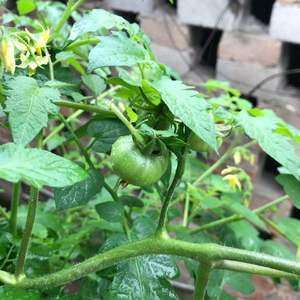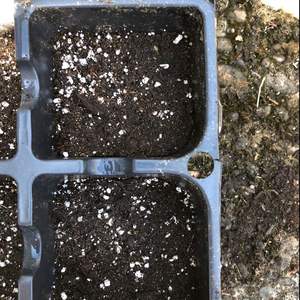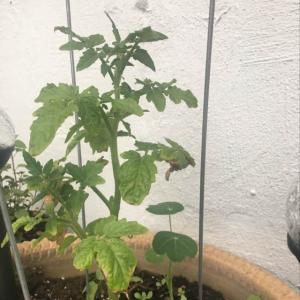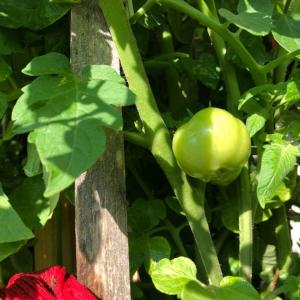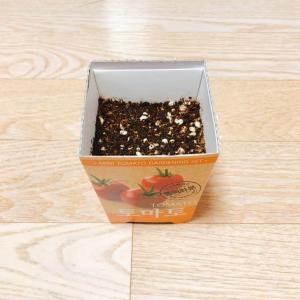文章
Miss Chen
2018年04月26日

Companion planting is the practice of planting certain vegetables next to one another to maximize positive effects of each plant. For example, basil is a good companion plant for tomatoes because it camouflages the tomato scent, thus protecting it from predatory insects. But just as some plants have a positive impact on each other, some plants negatively affect each other and should be planted in different parts of your garden.
Tomatoes

Tomato is one of the most popular garden vegetables, but it is not always a good companion. Cauliflower, peas, corn and broccoli are just a few vegetables that get a negative effect from its tomato plant neighbors. Many times vegetables don't grow well together because they compete for the same nutrients. In other cases, such as tomatoes and corns, both attract worms that thrive in similar habitats. Fennel and potatoes have a negative effect on tomatoes.
Strawberries

Strawberries are a popular addition to many vegetable gardens, but they are not always a positive addition. Broccoli, cabbage, cauliflower and Brussels sprouts should not be planted with strawberries. The fruit plant uses great amounts of nitrogen and phosphorus from the soil, depleting the nutrients the other plants need. When plants compete for the same nutrients, one or the other -- sometimes both -- do not thrive.
Beans and Potatoes

Avoid planting root crops such as potatoes next to other root crops -- they compete for nutrients at the same depth. Other vegetables negatively affected by growing next to potatoes are zucchini, tomatoes, summer squash and pumpkins. Those plants require more watering, while potatoes require less watering. If over watered, plant tubers began to rot and attract bugs that are harmful to the other plants. Beans naturally adjust nitrogen levels in soil, so avoid planting near plants, such as broccoli, onions and kohlrabi that thrive when planted in soil with a higher nitrogen content.
Organic Myth or Real Science?
Though gardeners have been practicing companion planting for centuries, there's no specific scientific data proving that the method makes your garden plants thrive. Gardening expert Louise Riotte writes that companion planting is something the scientific community is beginning to take a closer look at the gardening practice. But companion planting is more than just folklore. Organic gardeners who use companion planting stand firm that mutual benefit of certain plants, such as tomato and basil, keep pests at bay and increases garden production. Companion planting also uses scientific methods by relying on plants such as beans to fix nitrogen levels in soil.
Tomatoes

Tomato is one of the most popular garden vegetables, but it is not always a good companion. Cauliflower, peas, corn and broccoli are just a few vegetables that get a negative effect from its tomato plant neighbors. Many times vegetables don't grow well together because they compete for the same nutrients. In other cases, such as tomatoes and corns, both attract worms that thrive in similar habitats. Fennel and potatoes have a negative effect on tomatoes.
Strawberries

Strawberries are a popular addition to many vegetable gardens, but they are not always a positive addition. Broccoli, cabbage, cauliflower and Brussels sprouts should not be planted with strawberries. The fruit plant uses great amounts of nitrogen and phosphorus from the soil, depleting the nutrients the other plants need. When plants compete for the same nutrients, one or the other -- sometimes both -- do not thrive.
Beans and Potatoes

Avoid planting root crops such as potatoes next to other root crops -- they compete for nutrients at the same depth. Other vegetables negatively affected by growing next to potatoes are zucchini, tomatoes, summer squash and pumpkins. Those plants require more watering, while potatoes require less watering. If over watered, plant tubers began to rot and attract bugs that are harmful to the other plants. Beans naturally adjust nitrogen levels in soil, so avoid planting near plants, such as broccoli, onions and kohlrabi that thrive when planted in soil with a higher nitrogen content.
Organic Myth or Real Science?
Though gardeners have been practicing companion planting for centuries, there's no specific scientific data proving that the method makes your garden plants thrive. Gardening expert Louise Riotte writes that companion planting is something the scientific community is beginning to take a closer look at the gardening practice. But companion planting is more than just folklore. Organic gardeners who use companion planting stand firm that mutual benefit of certain plants, such as tomato and basil, keep pests at bay and increases garden production. Companion planting also uses scientific methods by relying on plants such as beans to fix nitrogen levels in soil.
0
2
文章
Miss Chen
2018年04月17日

Just the right size for picking and eating whole, cherry and grape tomatoes (Solanum lycopersicum var. cerasiforme) are small-fruited tomato types. Cherry tomatoes are round, juicy and tend to be thick-skinned. Grape tomatoes are oblong, thinner skinned and have drier flesh. Native to South America, tomatoes, including grape and cherry varieties, are frost-tender perennials hardy in U.S. Department of Agriculture plant hardiness zones 10 through 11. They grow as annuals in zones 9 and below. Taken to Europe in the 1500s, tomatoes now grow worldwide.
Growth Habits

Grape and cherry tomatoes have both determinate and indeterminate growth varieties. Indeterminate tomatoes keep growing for the life of the plant, producing a vining growth. Determinate tomatoes stop growing, usually at around 3 to 4 feet tall, for a bush type plant suitable for containers as well as garden growing. The grape tomatoes "Santa" and "Jolly Girl" have determinate growth, and varieties "Sweet Hearts" and "Five Star Grape" have indeterminate growth. Cherry tomatoes range from indeterminate, sprawling plants such as early-maturing "Black Cherry" and "Sweet Million" to dwarf varieties such as 18-inch-tall "Tiny Tim," which produces fruit in 60 days.
Fruit Taste and Texture

Both cherry and grape tomatoes have a sweet flavor when compared to larger tomatoes. Some varieties are so sweet it's almost like eating candy, such as cherry tomatoes "Sweet 100,'' which is indeterminate at 65 to 70 days, and "SunSugar," a 62-day indeterminate plant. "Sakura Honey" is a sweet grape tomato with indeterminate growth. Grape tomatoes, because of their thin skins and less juicy texture, are easier to eat than cherry tomatoes because they don't squirt juice when you bite them.
Fruit Colors

Cherry tomatoes come in a wider range of fruit colors than do grape tomatoes. Both types come in red, pink, yellow and orange. In addition, cherry tomatoes come in green, black, brown and ivory. Some examples are "Green Grape," which despite the name is a cherry tomato that is determinate with 70-day maturation; "Snow White," ripening to ivory on indeterminate, 75-day plants, and "Black Cherry," with complex-flavored black fruit on indeterminate, 65-day vines.
Varietal Origins

Originally, the wild tomato that developed into cultivated tomatoes had small fruits and resembled cherry tomatoes. Genetic work summarized by researchers Yuling Bai and Pim Lindhout shows that cherry tomatoes result from a mixture of wild and cultivated tomatoes. Grape tomatoes came from a Taiwanese seed company, which produced the "Santa F1" hybrid. Introduced into the U.S. in 1996, it was renamed "grape tomato." There are now other kinds of grape tomatoes as well.
Growth Considerations

Cherry and grape tomatoes have similar growing needs. Indeterminate plants grow best on support systems such as trellises, stakes or tomato cages. Bush types usually don't need support. Tomatoes need at least eight hours of sunlight daily, well-draining soil rich in organic material, and regular water and fertilizer -- such as 5-5-5 applied as a side dressing when fruits start to form and every three weeks following. Scatter a small handful of fertilizer evenly around each plant and dig it into the top soil layer.
Growth Habits

Grape and cherry tomatoes have both determinate and indeterminate growth varieties. Indeterminate tomatoes keep growing for the life of the plant, producing a vining growth. Determinate tomatoes stop growing, usually at around 3 to 4 feet tall, for a bush type plant suitable for containers as well as garden growing. The grape tomatoes "Santa" and "Jolly Girl" have determinate growth, and varieties "Sweet Hearts" and "Five Star Grape" have indeterminate growth. Cherry tomatoes range from indeterminate, sprawling plants such as early-maturing "Black Cherry" and "Sweet Million" to dwarf varieties such as 18-inch-tall "Tiny Tim," which produces fruit in 60 days.
Fruit Taste and Texture

Both cherry and grape tomatoes have a sweet flavor when compared to larger tomatoes. Some varieties are so sweet it's almost like eating candy, such as cherry tomatoes "Sweet 100,'' which is indeterminate at 65 to 70 days, and "SunSugar," a 62-day indeterminate plant. "Sakura Honey" is a sweet grape tomato with indeterminate growth. Grape tomatoes, because of their thin skins and less juicy texture, are easier to eat than cherry tomatoes because they don't squirt juice when you bite them.
Fruit Colors

Cherry tomatoes come in a wider range of fruit colors than do grape tomatoes. Both types come in red, pink, yellow and orange. In addition, cherry tomatoes come in green, black, brown and ivory. Some examples are "Green Grape," which despite the name is a cherry tomato that is determinate with 70-day maturation; "Snow White," ripening to ivory on indeterminate, 75-day plants, and "Black Cherry," with complex-flavored black fruit on indeterminate, 65-day vines.
Varietal Origins

Originally, the wild tomato that developed into cultivated tomatoes had small fruits and resembled cherry tomatoes. Genetic work summarized by researchers Yuling Bai and Pim Lindhout shows that cherry tomatoes result from a mixture of wild and cultivated tomatoes. Grape tomatoes came from a Taiwanese seed company, which produced the "Santa F1" hybrid. Introduced into the U.S. in 1996, it was renamed "grape tomato." There are now other kinds of grape tomatoes as well.
Growth Considerations

Cherry and grape tomatoes have similar growing needs. Indeterminate plants grow best on support systems such as trellises, stakes or tomato cages. Bush types usually don't need support. Tomatoes need at least eight hours of sunlight daily, well-draining soil rich in organic material, and regular water and fertilizer -- such as 5-5-5 applied as a side dressing when fruits start to form and every three weeks following. Scatter a small handful of fertilizer evenly around each plant and dig it into the top soil layer.
0
0
文章
Miss Chen
2018年04月16日

Eggplants are garden cousins of tomato and pepper plants. When you grow eggplants in a backyard garden, expect them to grow in similar fashion to tomato plants. Gardeners often stake eggplant plants to give them sufficient support as they grow taller and larger throughout the growing season. Prune eggplants carefully throughout the growing season to ensure that the plants grow properly and produce a bounty of delicious eggplants.

Step 1
Watch the eggplant plants as they grow taller and larger. The stems of eggplants grow similarly to tomato plants, with suckers appearing between the main stalk and the side branches. If you do not prune away these suckers, they will divert plant energy and you may have fewer and smaller eggplants.
Step 2
Position the pruning shears so the blades are flush with the main stem and clip off the suckers flush with the stem.
Step 3
Discard the suckers in the bucket as you remove them. Never leave discarded plant pieces littering the soil beneath a plant because this may introduce bacteria and infection to the plant.

Step 4
Clip off the oldest leaves from the bottom two or three branches to improve air circulation throughout the eggplant.
Step 5
Check the eggplants once each week to find suckers, removing the suckers you find. Trim the bottom leaves once each month.

Step 1
Watch the eggplant plants as they grow taller and larger. The stems of eggplants grow similarly to tomato plants, with suckers appearing between the main stalk and the side branches. If you do not prune away these suckers, they will divert plant energy and you may have fewer and smaller eggplants.
Step 2
Position the pruning shears so the blades are flush with the main stem and clip off the suckers flush with the stem.
Step 3
Discard the suckers in the bucket as you remove them. Never leave discarded plant pieces littering the soil beneath a plant because this may introduce bacteria and infection to the plant.

Step 4
Clip off the oldest leaves from the bottom two or three branches to improve air circulation throughout the eggplant.
Step 5
Check the eggplants once each week to find suckers, removing the suckers you find. Trim the bottom leaves once each month.
0
0



